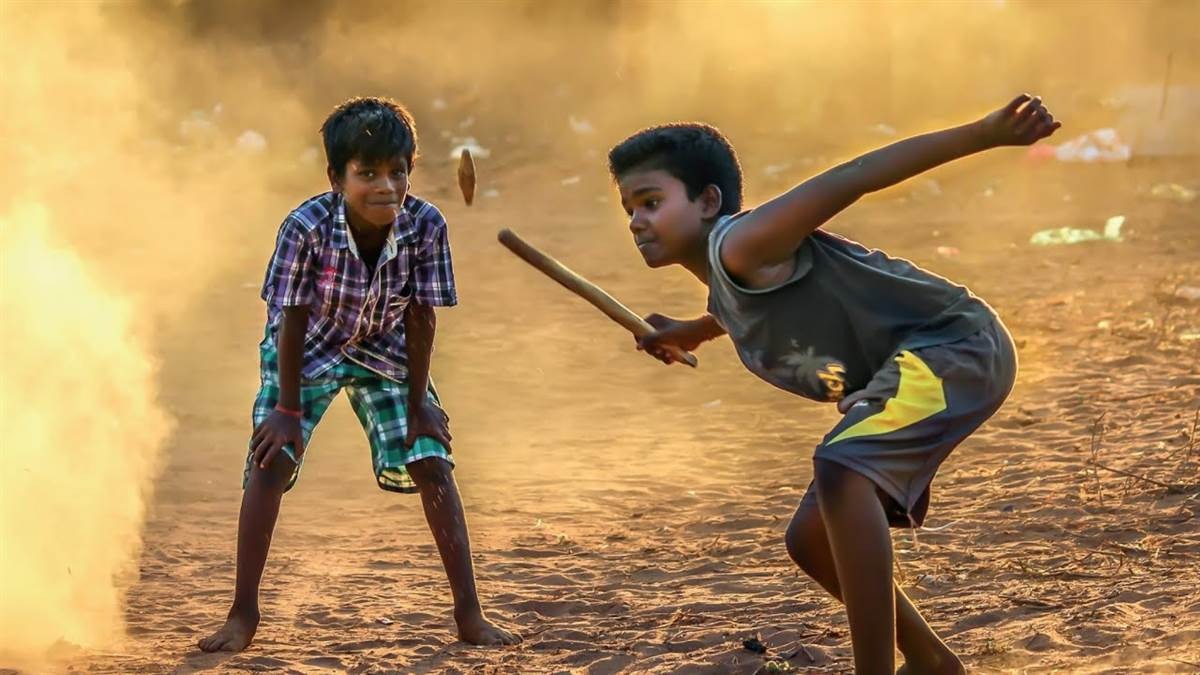Sports has a deep connection with human life. People of every age, class and country are interested in sports. Folk games are the collective creation of a group of people and continue to grow and develop naturally. Among folk games, games with easily available sports materials at the local level are prevalent. Sports of the people of Punjab are also open-minded, simple, physical and mental development like their nature. Their ancient games like-Kabaddi, Gulli-Danda, Khiddo-Khundi, Rasakshi, Gatka, Hid-Michi, Kotla-Chhapaki, Barhan Tahni, Stapu, Chess, Guddi Patola, Catti Masi, Adi-Tappa, Wrestling, Moongli Ferni, Jumping , Jumping Rope, Kikli, Saunchi, Khuttis, Bakku, Kodiyas, Bante, Picho Bakri, Main Raja Patwari etc. As time changed, many of these games disappeared and some new ones emerged.
Method and material of folk games
Punjabi folk games involve locally obtained materials such as sticks, stones, bricks, sticks, twigs, rods, sticks, coals, sticks, balls, rods, old cloth toys, jute ropes, etc. These games do not have any fixed time or place. These can be played in the morning, evening, afternoon and during bright nights of Trikal when there is free time. Most sports involve physical activities, running, jumping and jumping. The methods of gathering, pacing and selecting players in folk games are simple but interesting.
Classification of Games
Folk games can be divided on the basis of age, gender and also on the basis of mental and physical games. Like playing small children's games like Latu, Bhambiris, Akar-Bakkar, Bante etc. Youth sports are physically demanding, such as Kabaddi, Mughdar Farna, Mungalis Farna etc. Games for the elderly are cards, chess, quadrat etc., but in some games there is no age limit but physical ability is the priority. Similarly, girls' games include Geeta, Kotla Chhapaki, Khiddo, Gudi Phukni, Kikli, Stapu etc.
Kabaddi
There are many types of Kabaddi, like Long Kabaddi, Short or Jafal Kabaddi. For long Kabaddi, two marks are made facing each other at a distance of five to six steps. The number of players in both the teams is equal. A player from one side goes to touch the players from the other side saying 'Kabaddi-Kabaddi' and they throw the ball in front. If a Kabaddi-Kabaddi player touches an opponent and misses while returning and the opponent touches him before the mark, he is considered to have lost. The next type of Kabaddi is Jafal Kabaddi. In this game players try to pull the opponent towards themselves by hugging them. A Kabaddi player tries his best not to get hit and even if he gets hit, he somehow escapes from there and reaches the mark, then he wins. Nowadays such Kabaddi is called National Style and Punjab Style Kabaddi. Its national and international competitions are also organized.
bullet rod
Both the gun and the stick are made of wood. The bullet is sharpened from the end. A small pit is dug in the ground. The players are divided into two lines. After the turn is over, the first taker places the ball on the rod and throws it away from the stick. Players of the opposing team catch the ball and hit it on a stick placed on the ball. If the target hits the rod then the turn of the first one ends and if the target is not hit then it is the turn of the first one.
tug of war
It is a game of physical ability. There is a big thick rope in it. Half the players face each other on one side of the rope and half on the other, pulling the rope towards themselves. The team that pulls the rope towards itself wins.
hide and seek
This game is very popular among small children. The number of players in this game can be from three to five. In this, by covering or closing the eyes of one child, the other children become hidden. Then his hands are removed from his eyes and he is sent to find others. Whoever gets it first gets his turn.
Kotla Hive
This game is very interesting and exercise-oriented. In this game players sit in a circle and bow their heads down. Then a player with a whip (a piece of cloth) in his hand shouts, 'Kotla-chhapki jumme raat hai, hai bai hai hai, the one who looks ahead and behind, his presence is hai hai, hai bai hai hai'. While speaking, he places the snake behind the back of a player and runs and then starts circling. If the person holding the whip does not know until he reaches there, he picks up the whip and starts beating and then it is the turn of the other person. If they come to know that the whip is after them, they pick up the whip and run to kill it.
to stop
This game is played by girls. In this, a square box is made on the ground and chambers are made in it. A player puts the character with his foot into the next box and if the character or foot lands on the line, he is out and it is the turn of the other player. This game is also becoming extinct.
twigs
Girls also play this game. This game consists of five or seven sticks made of clay etc. and is played with a ball. The girl playing makes her left hand like a house and throws the ball or Geeta up and with the other hand she inserts one or two twigs into the house. If the ball or balls are not caught before the sticks fall into the house, the game is over and if all the sticks fall into the house, all these sticks are placed on the palm of the hand and then directly into the hand. Is caught. The hand and all the sticks are returned, if no one is in the hand then the turn passes, but this game is also disappearing.
cat aunty
It is an imaginative and high-risk game. In this game the child plays the role of an aunt and distributes some things to other children. From there another child pretends to be a cat and steals the rest of the things. The children, posing as the cat and the aunt, run back and forth swinging sticks and singing the following song:
You ate the cat, the cat.
Aunty, aunty I did not eat.
heel spur
This is also a girl's game. In this, two girls facing each other step repeatedly on the shape of a sea or a well made of feet at opposite poles. This helps in practicing long jump. Then the feet and fists of the hands are made into a ball. Many such games have become extinct. Folk games have their own importance, but in the present times, the form of games has also changed according to the circumstances and needs.
 look news india
look news india

